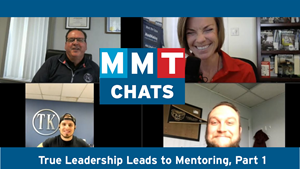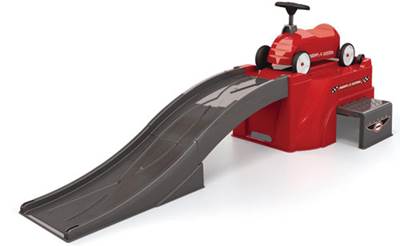From the Field: 3-D Printing Streamlines Product Development and Tooling Applications for Power Generation Company
A company that helps businesses harness the power of steam, is now leveraging a second powerful technology – 3D printing – to improve its own business performance.
A $100 million U.S. subsidiary of UK-based Spirax Sarco Engineering, Spirax Sarco, Inc.is headquartered in Blythewood, SC and manufactures products for steam heating and process plants in a wide range of industries, from automotive to vegetable oil processing.
Challenge: Costly Prototypes
Prototyping products that are under development is a fundamental early step for any manufacturer, and SSI was spending too much money on the process. For example, a simple T-shaped control valve you can hold in your hand cost $600 to $800 to prototype and took two weeks to obtain from a service bureau that used expensive stereolithography (SLA) prototyping technology. For a set of seven or eight design options, SSI’s tab was upwards of $6,000.
Solution: 3-D Printing
SSI learned of an approach that would eventually yield enterprise-wide benefits: creating prototypes in house with a 3-D printer. A 3-D printer creates a detailed physical object from 3-D data, such as a CAD file, much as an office printer creates documents from word-processing files. “With a 3-D printer we could print sets of the same control valve overnight for $50, saving ourselves thousands of dollars, weeks of waiting and, most importantly, letting us create many more iterations in our design window,” said SSI Product Development Engineer Leslie Penfield. “We could now test more design profiles and flow patterns – tapping threads into the 3-D printed part as easily as we did the SLA part – and get the design absolutely right before approving it for tooling.”
SSI chose the ZPrinter® 310 from Z Corporation of Burlington, MA, because of its versatility, part quality, price and low operating cost. “What really sold us on the ZPrinter is the fact we could use it for so many different applications: prototypes, fluid flow analysis and, as it turns out, sales, marketing and tradeshows,” Penfield says. “It’s just such a versatile machine versus the others. And the cost was significantly less.” Investing in the 3-D printer is part of a larger SSI strategy for streamlining product development. For example, SSI has invested in SolidWorks® 3-D CAD software and CFdesign® fluid flow and heat transfer analysis software to refine designs through virtual simulations.
Results: Shorter Design Cycle, Better Products
"Between the software and the 3-D printer, we have compressed our design cycle by 25 to 30 percent,” Penfield says. “Prior to that, product development was trial by fire: design a prototype, cut tooling, test the prototype, iterate the design, and cut tooling again and again until the design was good enough. Now we get the design to where we really want it, print some prototypes, and cut tooling just once.”
The company quickly found other valuable uses for the 3-D printer beyond creating a simple plaster part model. The company began using 3-D printing to reduce the costs of investment cast prototypes. The company ZPrints the burnout pattern rather than sending a CAD design to a tooling contractor. This approach saves three to four weeks and avoids the $3,000 to $5,000 tooling charge, ultimately creating a prototype for $8 versus $5,000.
SSI is experimenting with direct pour casting into ZPrinted molds as another method for fabricating metal prototypes. They started ZPrinting parts and assemblies for sales demonstrations. The company ZPrinted models of its new B Series Control Valve, attached real internal trim, and gave the models to their regional sales offices. Rather than a 40-pound control valve, salespersons now had a six-pound model to tote – authentic in appearance on the inside as well as out. Says Penfield, “Salesmen can just throw them in the back seat of their car and take them wherever they’re going.”
SSI then began making scale models of products that hadn’t yet been built. For example, Penfield’s team created a scale model of an EasiHeat heat exchanger customized for a new construction bid in Alaska. The full-scale product stands 6-feet-by-4-feet-by-5-feet and weighs 1,000 pounds. SSI ZPrinted a portable one-third scale model, presented it to the customer, and won the $600,000 job.
Competitors presented only drawings. SSI then began creating more sophisticated models for tradeshows, such as the scale model of the PTF4 Condensate Pump, a one-third scale model with a cutaway section exposing internal floating mechanisms. Using the real 6-footby-3-foot-by-4-foot product would have taken up three times the floor space, weighed 600 pounds instead of 20 pounds, and consumed extra staff hours at the booth for set up, tear down, packing and shipping. “We paid for the ZPrinter in the first year through the SLA and investment casting cost
reductions alone,” Penfield says. “Time, weight, booth space, model portability, sales impact,
design improvements and overall customer satisfaction have made 3-D printing a strategic solution.”
“ZPrinting has become second nature – like printing off an email – it’s that convenient and that cheap. Printing off a part in 10 different design variations is nothing to us anymore. We’ve printed thousands of models. The part cost is so insignificant compared with the knowledge you gain. Somehow, wherever we decide to 3-D print we see an improvement in business performance. We like that.”
Related Content
Leading Mold Manufacturers Share Best Practices for Improving Efficiency
Precise Tooling Solutions, X-Cell Tool and Mold, M&M Tool and Mold, Ameritech Die & Mold, and Cavalier Tool & Manufacturing, sit down for a fast-paced Q&A focused on strategies for improving efficiencies across their operations.
Read MoreMMT Chats: Acquisition Trends and Lessons for Mold Builders
Jim Berklas is a former full-time M&A lawyer for several of the largest private equity firms in the country and has 25 years of M&A experience and 200 closed transaction. Today, he is founder and M&A Leader with Augmented Industry Services. He joins me for this MMT Chat on mergers and acquisitions trends and strategies within in the mold manufacturing industry. This episode is brought to you by ISCAR with New Ideas for Machining Intelligently.
Read MoreConsiderations for Mold Base Material Selection
Choosing the right material can greatly affect the profitability and cost of your application.
Read MoreICYMI: MMT Chats: True Leadership Leads to Mentoring, Part 1
This trio from TK Mold and Engineering in Romeo, Michigan, joins me to discuss the role of leadership and culture in mentorship. This episode is brought to you by ISCAR with New Ideas for Machining Intelligently.
Read MoreRead Next
3D Printing Provides New Options for Prototyping, Moldmaking
Case Study / Additive Manufacturing.
Read MoreReasons to Use Fiber Lasers for Mold Cleaning
Fiber lasers offer a simplicity, speed, control and portability, minimizing mold cleaning risks.
Read MoreAre You a Moldmaker Considering 3D Printing? Consider the 3D Printing Workshop at NPE2024
Presentations will cover 3D printing for mold tooling, material innovation, product development, bridge production and full-scale, high-volume additive manufacturing.
Read More









.jpg;maxWidth=300;quality=90)















